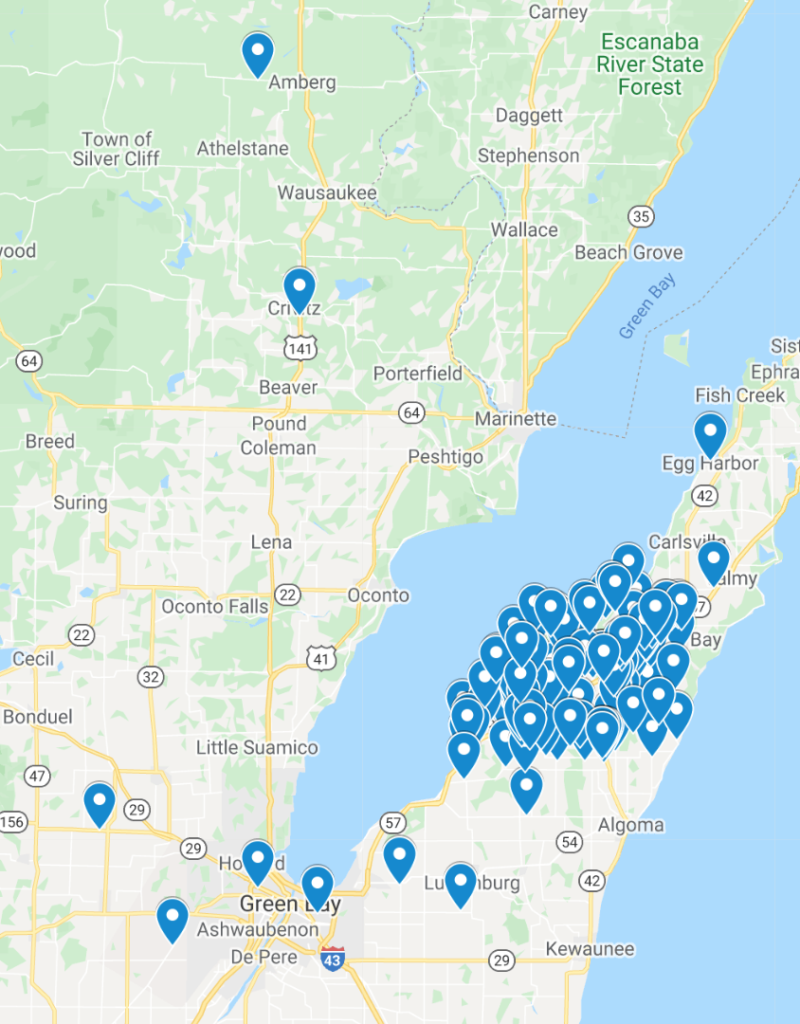What Have Area Schools Learned about Broadband Access?
- Share
- Tweet
- Pin
- Share

When COVID-19 required private homes to replace public classrooms, families and teachers up and down Door County found that their internet access was often inadequate or unreliable.
Through surveying school administrators, the Peninsula Pulse learned a lot about the internet challenges that the home-schooling model has presented for school districts, administrators and educators. For example, two challenges became apparent to Aaron Hilts, principal of Sevastopol Elementary.
“The first was learning which families had internet capabilities and then learning to what level they had access,” Hilts said. “We anticipated that some families wouldn’t have access due to a variety of factors, including geography; and others that cannot afford the internet options available, whether that be cable or, in many cases, through a phone plan that charges by the data plan.”
Sturgeon Bay Superintendent Daniel Tjernagel cited increased internet traffic as a concern for his district. Gibraltar Secondary Principal Gereon Methner said the topography and geology of Northern Door County poses significant challenges for Gibraltar families.
“High-speed internet is simply not available everywhere in Northern Door,” Methner said, “and we have worked to provide families with hotspots.”
According to Southern Door Superintendent Patricia Vickman, her district needed to purchase more than 150 hotspots to ensure that students had access to the virtual instruction taking place.
Adam Baier, principal of Sevastopol High School, learned that many of his school’s families had to depend on cell-phone plans as a result of limited internet access, and he said that “cell-phone data packages are limited and expensive. We have learned to adjust by minimizing the data that is required to complete assigned work.”
Baier said that teachers have avoided sending instructional videos as the only means of communicating content because videos require significant data and can quickly use up a student’s data plan. He also said that in the areas where there is poor internet access, there is also poor cell-phone reception.
Hilts has learned that having access and having robust, consistent access are two very different things.
“Family A, with high-speed WiFi through cable; and Family B, with internet through a cell phone, both have internet access,” he said. “Family B, however, will quickly run into issues like using up its data plan watching video lesson plans or attending videoconferences for lessons. So, even though both have access, the type of access needs to be taken into account when planning lessons and delivery.”
Vickman said the reality that Southern Door families have encountered this spring validates a 2017 Bright Bytes survey of her district’s pre-K–12 families, which indicated that a majority of parents felt their internet connection was underconnected, constrained because of service interruptions, so slow that it could not accommodate multiple users, or limited to mobile-only access – all a result of the lack of broadband connectivity in their locations.
“While the district has worked with the County of Door to increase our broadband through governmental access,” she said, “the reality is that for rural areas like our school district, reliable home internet remains a challenge for Southern Door students, families, staff and businesses.”
Regarding how these problems can be solved, administrators agreed that many are out of their control.
“The long-term answer is better countywide infrastructure to enable more robust and cost-effective internet access,” Hilts said. “In the interim, the biggest solution is personal contacts of our teachers to learn how best to reach those students – whether by print materials, internet materials or a combination of the two.”
Tjernagel concurred.
“While enhanced time for planning and professional development would assist with a number of things, we still need to be aware of a sustainable way to address connectivity in the future,” he said.
Vickman said that the current broadband landscape of unreliable, inconsistent and limited internet connectivity has also affected some families’ choice to live in Southern Door.
“Three years ago, a new family chose our community as a place to raise their children, and one in which they hoped to continue their international business from home,” Vickman said. “After a year of frustration with the lack of internet accessibility, they left the area and moved to the Fox Valley area in order to sustain their livelihood. Realtors have also shared that the lack of internet access in the area has also negatively impacted home sales for young families looking to move into our school district.”



